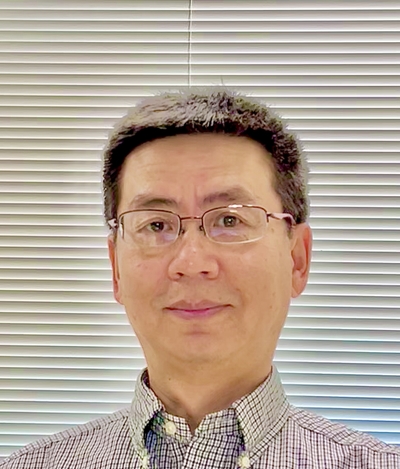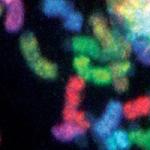
Yawen Bai, Ph.D.
Senior Investigator
Laboratory of Biochemistry and Molecular Biology
NCI/CCR
Research Topics
In eukaryotic cells, long DNA molecules are wrapped around specialized proteins called histones, forming a compact structure known as chromatin. At its most basic level, chromatin is arranged into repeating units called nucleosomes. Each nucleosome consists of approximately 147 base pairs of DNA wrapped around a core of four histone proteins (H2A, H2B, H3, and H4), with two copies of each. This structure helps condense DNA while still allowing controlled access for crucial cellular processes such as gene expression and replication. In more complex organisms, such as humans, an additional protein known as a linker histone (H1) binds to the DNA between nucleosomes, forming a structure called a chromatosome (H1 + nucleosome). Linker histones play a vital role in further compacting chromatin into higher-order structures, ensuring that DNA remains properly organized and regulated. Humans possess 11 different variants of linker histones, each potentially influencing chromatin structure in distinct ways. Beyond histones, chromatin structure is also influenced by various other proteins. These include histone chaperones, which aid in nucleosome assembly and disassembly; chromatin remodeling enzymes, which reposition nucleosomes to expose or conceal specific DNA regions; and histone modification enzymes, which chemically modify histones to regulate DNA accessibility. Additionally, transcription factors and kinetochore proteins are essential for gene regulation and chromosome organization. Notably, mutations in histones and transcription factors have been associated with cancer.
To investigate these complex processes and contribute to advancements in cancer therapeutics, we utilize a range of cutting-edge scientific techniques, including nuclear magnetic resonance (NMR), X-ray crystallography, cryo-electron microscopy (Cryo-EM), isothermal titration calorimetry (ITC), and Förster resonance energy transfer (FRET). Our current research focuses on the following molecular interactions, including (i) How histones interact with their chaperones to maintain chromatin stability; (ii) How pioneer transcription factors recognize their native nucleosome targets to regulate chromatin structure and gene activity; (iii) How linker histones together with heterochromatin protein 1 (HP1) contribute to chromatin compaction and gene suppression. By exploring these fundamental mechanisms, we aim to enhance our understanding of DNA organization within cells, with significant implications for gene regulation, cellular development, and disease processes, including cancer.
Biography
Dr. Yawen Bai received his Ph.D. in biophysics from the University of Pennsylvania Medical School in 1994. He did his Ph.D. work in Walter Englander's lab, where he developed the native-state hydrogen exchange method to detect partially unfolded states of proteins. He completed his postdoctoral training in Peter Wright's lab at the Scripps Research Institute, where he studied protein folding using multi-dimensional NMR methods. He joined the Laboratory of Biochemistry of NCI as an independent investigator in 1997.
Selected Publications
- Chittori S, Hong J, Bai Y, Subramaniam S. Structure of the primed state of the ATPase domain of chromatin remodeling factor ISWI bound to the nucleosome. Nucleic Acids Res. 2019;47(17):9400-9409.
- Zhou BR, Jiang J, Ghirlando R, Norouzi D, Sathish Yadav KN, Feng H, Wang R, Zhang P, Zhurkin V, Bai Y. Revisit of Reconstituted 30-nm Nucleosome Arrays Reveals an Ensemble of Dynamic Structures. J Mol Biol. 2018;430(18 Pt B):3093-3110.
- Fyodorov DV, Zhou BR, Skoultchi AI, Bai Y. Emerging roles of linker histones in regulating chromatin structure and function. Nat Rev Mol Cell Biol. 2018;19(3):192-206.
- Chittori S, Hong J, Saunders H, Feng H, Ghirlando R, Kelly AE, Bai Y, Subramaniam S. Structural mechanisms of centromeric nucleosome recognition by the kinetochore protein CENP-N. Science. 2018;359(6373):339-343.
- Kato H, Jiang J, Zhou BR, Rozendaal M, Feng H, Ghirlando R, Xiao TS, Straight AF, Bai Y. A conserved mechanism for centromeric nucleosome recognition by centromere protein CENP-C. Science. 2013;340(6136):1110-3.
Related Scientific Focus Areas

Biomedical Engineering and Biophysics
View additional Principal Investigators in Biomedical Engineering and Biophysics


This page was last updated on Tuesday, February 25, 2025